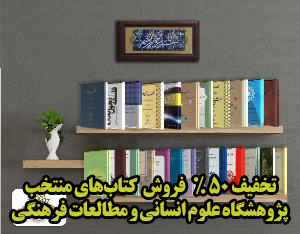تخمین شدت تمرین هوازی دختران سالم جوان از طریق آزمون شمارش (مقاله علمی وزارت علوم)
درجه علمی: نشریه علمی (وزارت علوم)
آرشیو
چکیده
زمینه و هدف : آزمون شمارش یک آزمون ساده مبتنی برعملکرد تهویه ای است که برای برآورد آستانه بی هوازی از آن استفاده می شود. دراین تحقیق، نسخه فارسی آزمون شمارش طراحی و مشخصات روان سنجی آن برای برآورد آستانه بی هوازی دختران جوان سالم بررسی شد. روش تحقیق : سه گروه19 نفری دانشجوی دختر سالم به صورت لایه ای هدفدار (با توان هوازی کم، متوسط، و زیاد) انتخاب شدند. آن ها پس از امضای رضایت نامه آگاهانه، به فاصله تقریبی یک هفته در دو نوبت آزمون وامانده ساز فزآینده هوازی روی تردمیل شرکت کردند. در نوبت اول آزمون شمارش و در نوبت دوم آزمون تحلیل گازی اجرا شدند. برآوردهای تهویه ای آزمون شمارش بر اساس نتایج تحلیل گازی ارزشیابی شد. توسط نرم افزار SPSS ، تحلیل های آماری از طریق تحلیل واریانس یک طرفه به اجرا در آمد. یافته ها : سه گروه از حیث VO 2max تفاوت معنادار داشتند (P≤0/01 و 32/42≤<sub>(54و2)</sub>f). با این وجود، در آستانه بی هوازی میانگین ±انحراف معیار، ضربان، مقیاس بورگ، و شمارش در سه گروه معادل و به ترتیب برابر 10±177 ضربان، 2±15 درجه، و1±5 شماره بود. در مرحله بی هوازی نیز مقادیر فوق همچنان در سه گروه معادل و به ترتیب به 7±193 ضربان، 1±18 درجه، و1±3 شماره رسید. نتیجه گیری : نتایج نشان داد که عملکرد آزمون شمارش در تعیین آستانه بی هوازی و منطقه بی هوازی مشابه با آزمون ضربان و بهتر از مقیاس بورگ است. رابطه ی آزمون شمارش با فشار کار یک رابطه ی خطی معکوس بود. برای دختران سالم جوان، 5 شمارش نشان از فعالیت در آستانه بی هوازی و 3 شمارش نشان از فعالیت در منطقه بی هوازی داشت. یافته های این مطالعه استفاده از آزمون شمارش برای تعیین آستانه بی هوازی را تایید نمود.Estimation of aerobic exercise intensity in healthy young females by the counting talk test
Background and objective : Counting talk test (CTT) is a simple test based on ventilation function which is used to estimate the anaerobic threshold. In this study, it is established the persian version of CTT and evaluated its psychometrics features for determination of anaerobic threshold in healthy young females. Materials and Methods : Three groups of healthy female students (with low, mid, and high aerobic capacity, n=19) were selected by stratified purposeful sampling. Giving informed consent, they took part in 2 sessions of exhausting graded exercise test (EGXT) which were apart by 1 week. CTT and gas analysis were administered respectively in first and second sessions of EGXT. Ventilatory estimations of CTT were evaluated by results of EGXT. Using SPSS software, data were analyzed using by one-way ANOVA. Results: VO2max of 3 groups were significantly different (F(2, 54)≥32.44 and P≤0.01). Nevertheless, in anaerobic threshold, mean (±SD) of heart rate (HR), Borg scale, and CTT were approximately the same and respectively equaled 177(±10) beat/min, 15(±2) degree and 5(±1) numbers. In anaerobic phase, they were remained the same and respectively equaled 193(±7) beat/min, 18(±1) degree, and 3(±1) numbers. Conclusion: The results showed that CTT can be considered as good as heart rate test and sometimes can be better than Borg scale in determining anaerobic threshold and anaerobic zone. There was a negative linear correlation between CTT and intensity of training. For healthy young females, a counting of 5 indicates working in anaerobic threshold and a counting of 3 means working in anaerobic zone. The use of CTT for determination of anaerobic threshold was confirmed by our findings.




